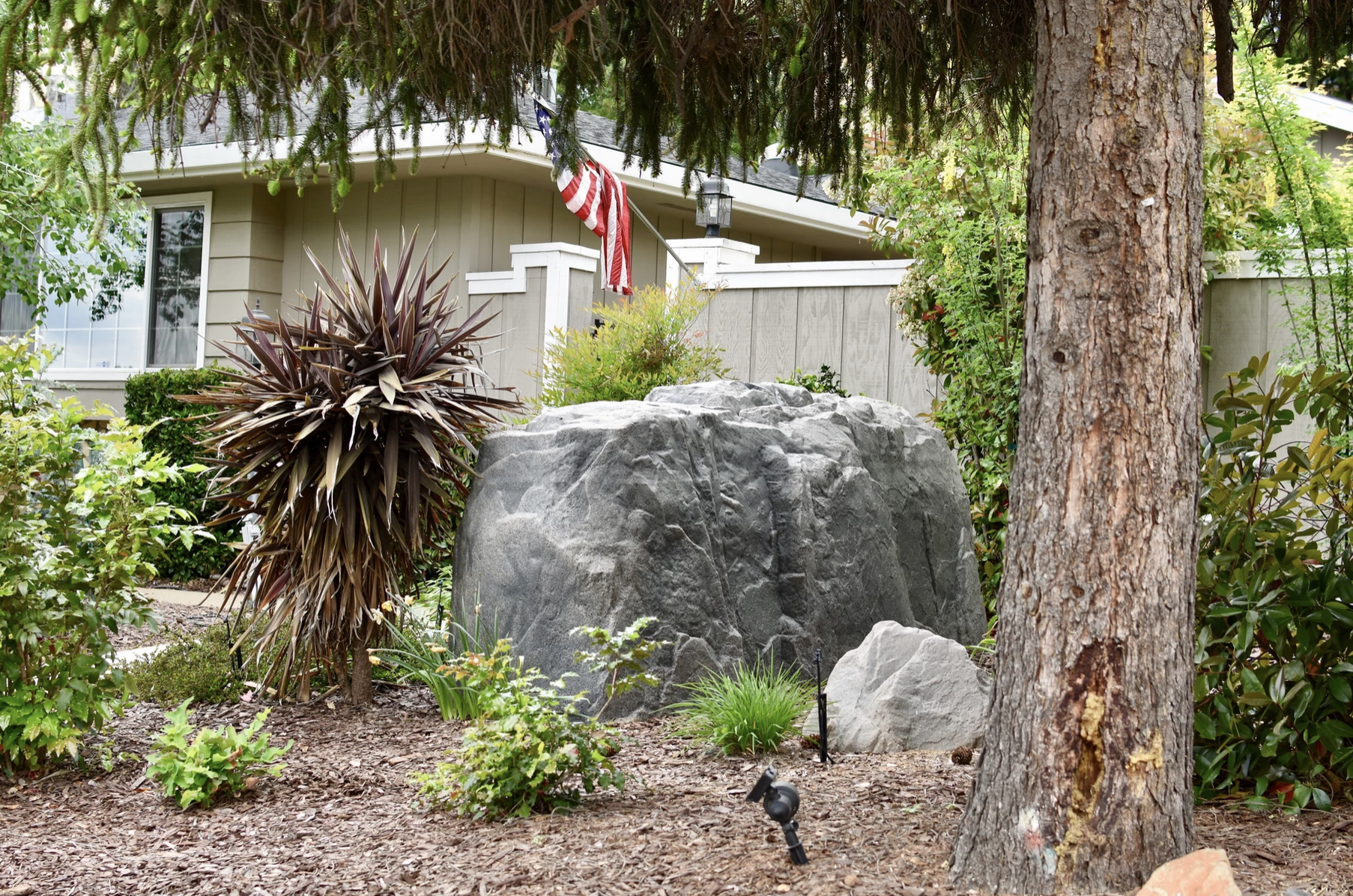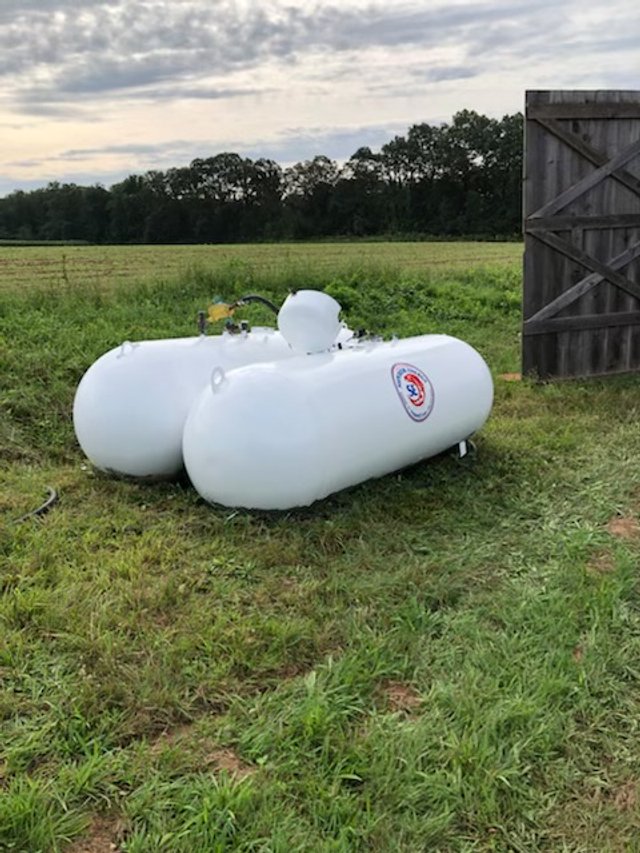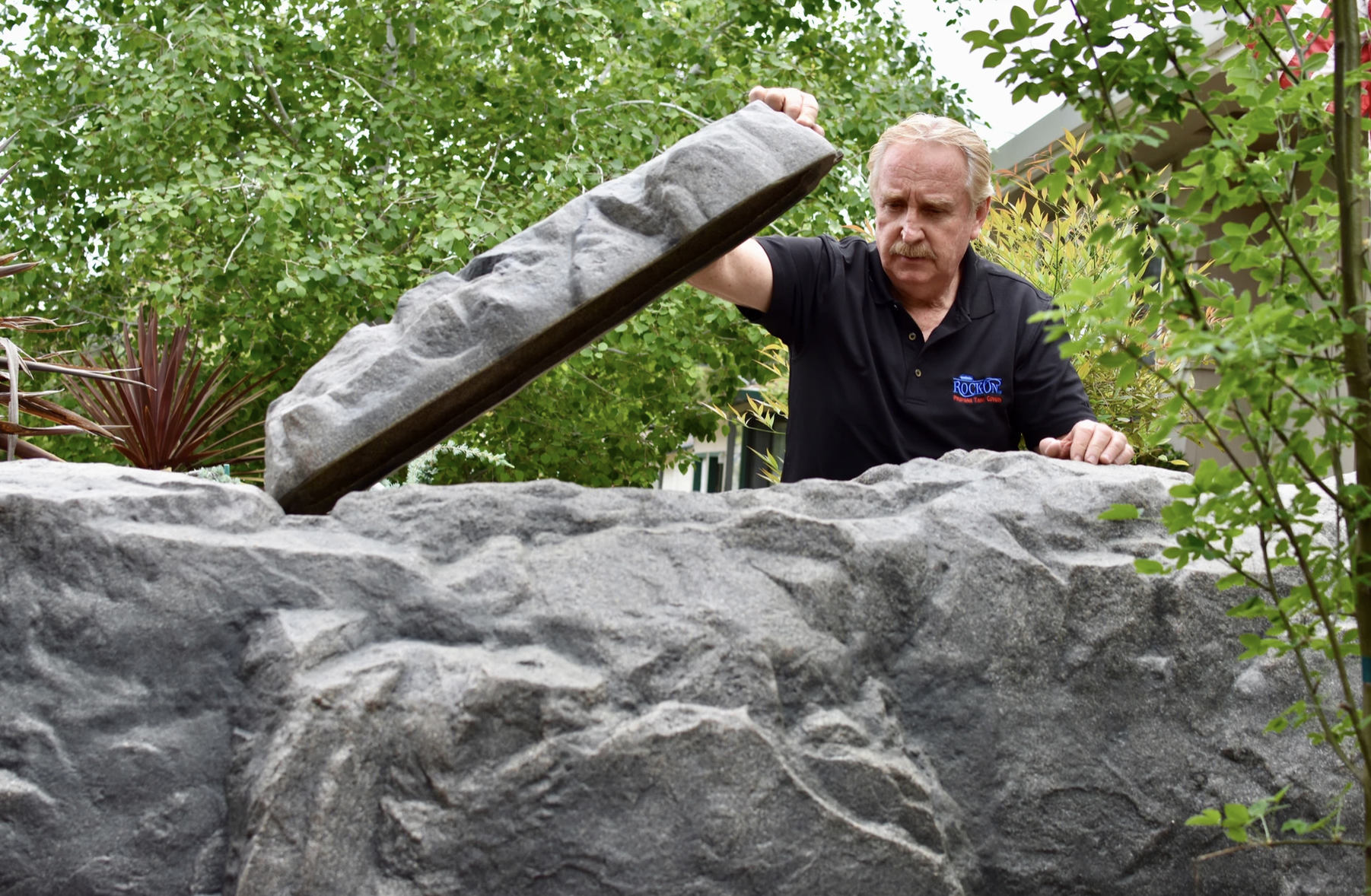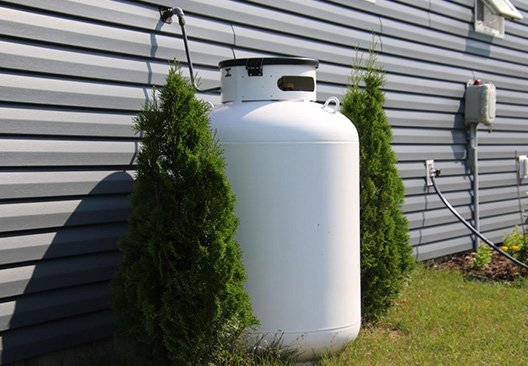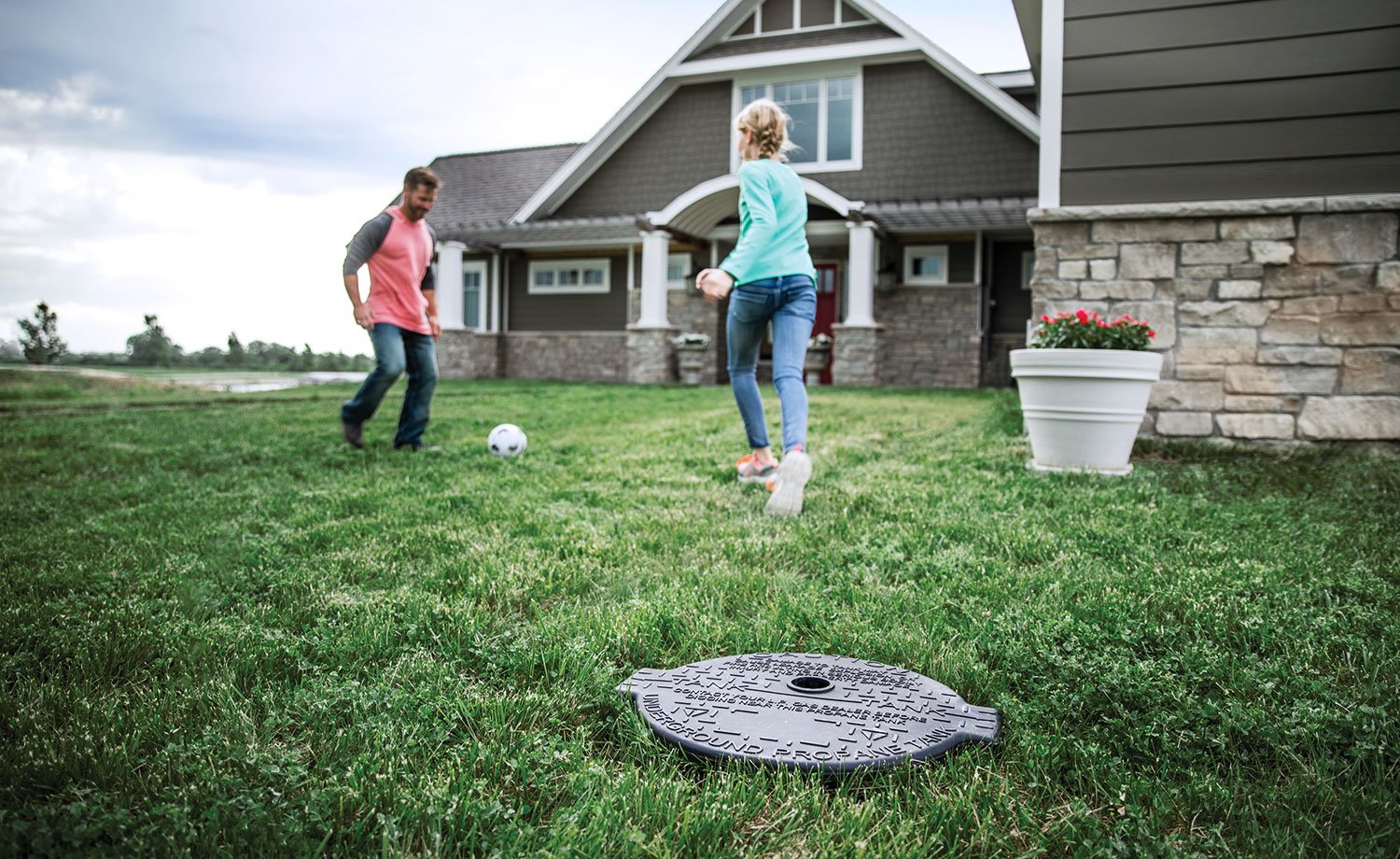Looking for ideas on disguising an outdoor propane gas tank?
Propane is an amazing fuel source for heating and appliances. It’s safe, efficient, and environmentally friendly.
Many homeowners appreciate propane as a reliable and cost-effective fuel option, but let’s face it - most propane tanks don’t always seamlessly fit in with your yard’s aesthetic, and for many, these tanks can become outright eyesores.
Here are a few options to help hide your tanks:
Click to jump to section
A Quick Word About Safety:
When hiding your large propane tank, it’s best to leave your propane tank uncovered behind whatever method you choose to allow easy and continued access to the propane tank.
When measuring your propane tank before purchasing materials, always include any additional space required to maintain at least one foot of distance between your screening materials and the propane tank itself.
1. Maintain the Tank's Appearance
Superior Energy technicians are expertly trained on propane safety and frequently check your system to ensure that it meets safety requirements. Including a visual tank inspection at the time of delivery. As the owner of the tank(s), if the tank ever needs repair or replacement, we do that with no additional charge.
Before & After Tank Updates:
2. If you own it: Paint Your Propane Tank to Help it Blend In
If you have an artistic side, this is probably the most effective and enjoyable way to give your tank a new look, but it won’t be suitable for all situations.
You’ll need to stick with light, reflective tones so the tank doesn’t overheat in the hot summer sun.
Use exterior paints that will weather well and check with your propane dealer for any precautions or rules applicable to your locale.
3. Use an Accessible Tank Cover
Tank covers made from appropriate, lightweight materials can effectively disguise your tank without making it any harder to access.
WARNING: It is illegal in some areas to completely enclose a tank or put a roof over it.
Faux Rock Covers
These faux rock covers are designed to look like authentic boulders. These can come at a steep price, but can guard your tank against rust and deterioration from rain and snow all-year-round, extending your tank’s longevity.
4. Utilize Landscaping
When planting, there are two rules to follow:
Make sure that you are able to access the tank easily. You don’t want to take down and replant a shrub every time your tank needs maintenance.
It is extremely important to avoid hitting any propane lines when landscaping as they are typically located no deeper than 12 inches under the surface. All plants, flowers, or shrubs should have shallow roots and should be planted a minimum of 3 feet away to avoid potential interference with the propane line when hiding your propane tank.
Use container gardening
Use several containers of varied sizes with high and low plants to screen the tank. Bougainvillea, Bamboo, or Mexican bluebell grow tall and thick in containers.
Plant screening plants directly in the ground if you prefer, but leave easy access to the tank for maintenance and filling.
Try a combination of plants and paint for even better camouflage. Hanging a few pots with bright-colored flowers will distract the eye enough that casual visitors might not even realize what they’re looking at.
Create a living privacy screen using evergreen hedges, shrubbery, or a trellis
Try boxwood hedges for an easy, fast-growing hedge. Allow the shrubs to grow tall enough to hide the propane tank.
You can plant dense shrubs and bushes around the tank. Typically, juniper and photinia bushes are used, as they grow to about six feet tall and provide an excellent facade for your tank.
Naturally, you don’t want vines climbing on any propane tank but you can plant fast-growing vines on a trellis and use that to hide the propane tank. Install the trellises on one to three sides to screen off the propane tank without blocking access.
5. Use Facades, Fencing, Walls & Screens
One of the easiest ways to make your propane tank easier on the eyes is to use decorative fencing. You don’t necessarily need a fence to run all the way around the tank: just use a stretch of fencing to block off the view from the house or road and create a little “hideaway.”
Added benefit: If you have fencing around your tank, it’ll be easier to temporarily cover it completely with a light tarp to protect it during heavy rains or snow.
Bamboo privacy screening, brick walls, rocks walls, or waterfalls all can hide a propane tank. Just be sure to leave enough space inside the fence to service and fill the tank.
Avoid completely enclosing the propane tank with fencing. This is especially important if you live in areas that have a snow accumulation, as the enclosed area can easily fill up, making it extremely difficult to clear out for your propane provider to access the tank.
Be sure to install a gate to allow access to the propane tank as needed — a five-foot buffer zone and an access door. Fences are preferred to other enclosures, as they allow for better ventilation.
6. Bury It
What About Underground Propane Tanks?
Burying your propane tank is an expensive but effective option. Many professionals even recommend burying your propane tank if you live in an area with harsh winters or hardy environments since this provides proper insulation.
Be certain to check with your propane dealer as not all tanks are rated for underground burial.
Consult with your town officials who may have regulations regarding burying propane tanks as well.
Which will you choose?
While your home may need a propane tank, remember it doesn’t mean you have to live with an eyesore. Creative solutions can help blend it naturally with its surroundings.
Just remember:
Don’t do anything that would obstruct access to the tank or make it harder to use.
Don’t block the path or obscure the tank so much so that service pros might not be able to find it.
Don’t put any object directly on top of your tank or allow anything to lean on the tank.
Don’t put anything flammable on, near, or around the tank.
Be careful when digging or driving posts around your propane tank.
Leave adequate access to the tank, keep supply lines and valves clear and check for local ordinances.
If you are unsure of how much access space or ventilation is required for hiding your propane tank, our propane professionals can help you make sure you are still meeting all propane safety regulations and that your tank is still easily accessible for deliveries and maintenance.

